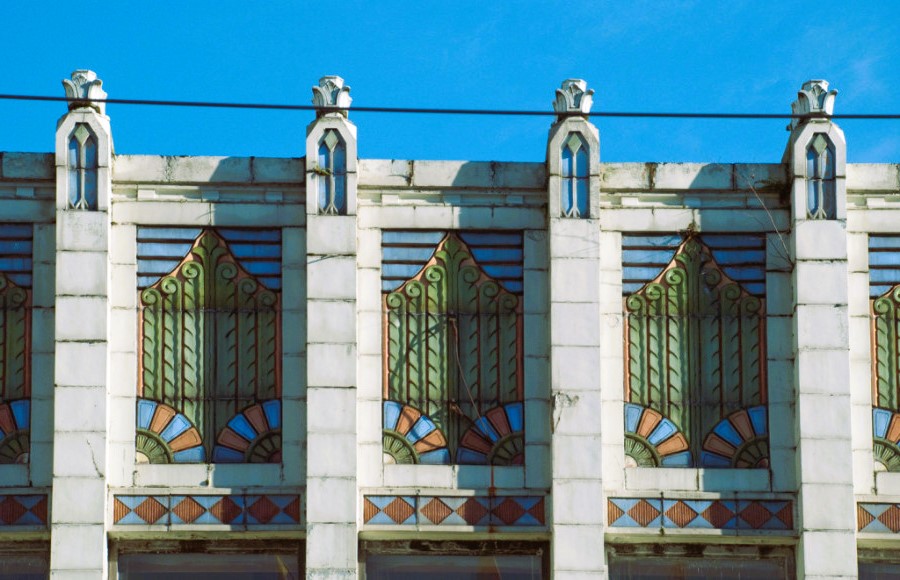Art Deco, a distinctive and influential design style that emerged in the early 20th century, has left an indelible mark on cities worldwide. While often associated with the vibrant metropolises of the 1920s and 1930s, the legacy of Art Deco design extends far beyond the bustling urban centers, reaching unexpected corners of the globe. In this exploration, we delve into the unique presence of Art Deco in the northern city of Edmonton, Canada, tracing its architectural and cultural legacy that continues to captivate residents and visitors alike.
Origins of Art Deco
Art Deco, short for Arts Décoratifs, originated in France after World War I, gaining prominence during the Roaring Twenties and the Jazz Age. Characterized by its bold geometric shapes, lavish ornamentation, and emphasis on luxury and modernity, Art Deco reflected the optimism and exuberance of the interwar period. The style found expression in various art forms, including architecture, fashion, visual arts, and interior design.
Art Deco in Edmonton

While Art Deco flourished in cities like New York, Miami, and Paris, its influence reached unexpected corners of the world, including the city of Edmonton in Alberta, Canada. Edmonton’s Art Deco buildings, though fewer in number compared to larger cities, showcase a unique blend of modernist aesthetics and regional influences.
One notable example is the Paramount Theatre, built in 1952. Despite being constructed several years after the peak of the Art Deco movement, the Paramount Theatre incorporates distinctive Art Deco elements, including a streamlined facade, geometric motifs, and neon signage. The theatre stands as a testament to the enduring appeal of Art Deco design, even in the post-war period.
Architectural Gems
Edmonton boasts a handful of architectural gems that showcase the city’s embrace of Art Deco principles. The historic Fairmont Hotel Macdonald, built in 1915, underwent renovations in the 1930s that added Art Deco elements to its exterior. The hotel’s stepped roofline, intricate detailing, and geometric patterns exemplify the integration of Art Deco into existing structures, creating a harmonious blend of old-world charm and modern sophistication.
Another noteworthy example is the Varscona Theatre, originally constructed as a movie house in 1927. Renovated in the 1990s, the theatre’s facade retains its Art Deco character, with striking patterns and decorative features that pay homage to the golden age of cinema. Architectural significance of Edmonton museums and galleries, more details here.
Cultural Impact
Beyond its architectural contributions, Art Deco has left an enduring cultural impact on Edmonton. The city’s commitment to preserving and celebrating its Art Deco heritage is evident in events such as the Edmonton Deco Weekend, where residents and visitors can explore guided tours, exhibitions, and lectures on the history and significance of Art Deco in the region.
In recent years, there has been a renewed appreciation for Art Deco design, inspiring local artists and designers to incorporate its elements into contemporary projects. From graphic design and fashion to public art installations, Edmontonians are finding innovative ways to infuse the spirit of Art Deco into the fabric of their community.
Preservation Efforts

Preserving the legacy of Art Deco in Edmonton requires a delicate balance between modernization and conservation. The City of Edmonton, in collaboration with heritage organizations, has undertaken initiatives to protect and restore Art Deco buildings, recognizing their cultural and historical significance. These efforts aim to ensure that future generations can continue to appreciate and be inspired by the unique architectural heritage that Art Deco has bestowed upon the city.
Conclusion
Edmonton’s embrace of Art Deco design serves as a testament to the enduring allure of this influential aesthetic movement. From iconic landmarks to hidden gems, the city’s architectural landscape reflects the timelessness of Art Deco principles. As Edmonton continues to evolve, it is heartening to witness the efforts made to preserve and celebrate the Art Deco legacy, ensuring that this distinctive design style remains an integral part of the city’s identity.
For further exploration of architectural standards and practices, refer to authoritative sources such as Canada’s official standards website (). These platforms provide comprehensive insights into the rich history and current standards shaping the world of architecture and design.
